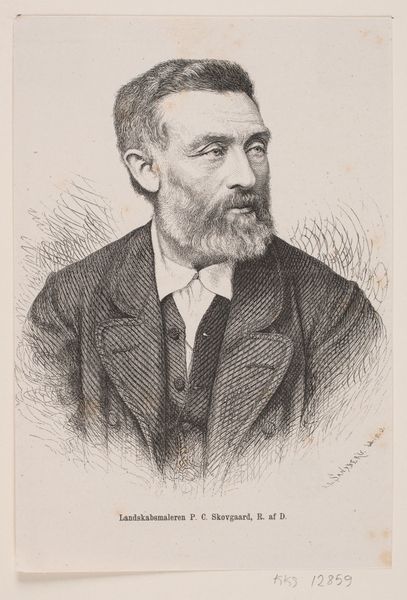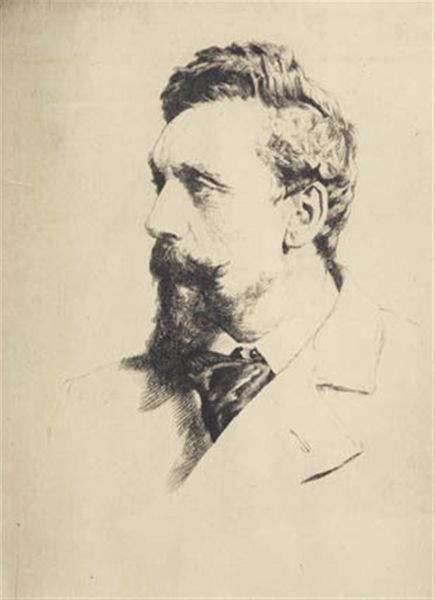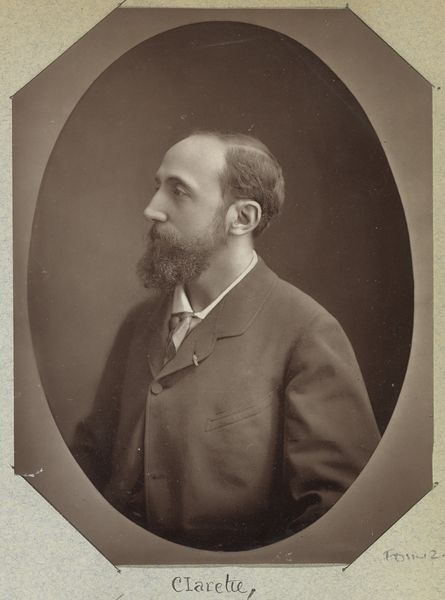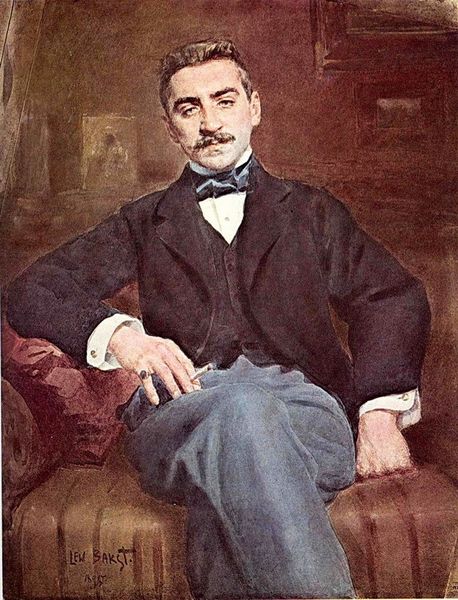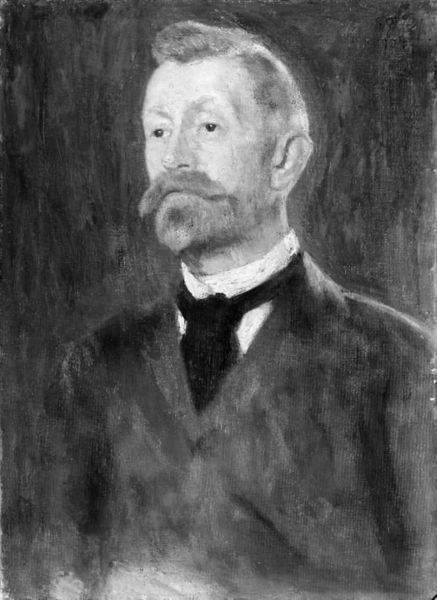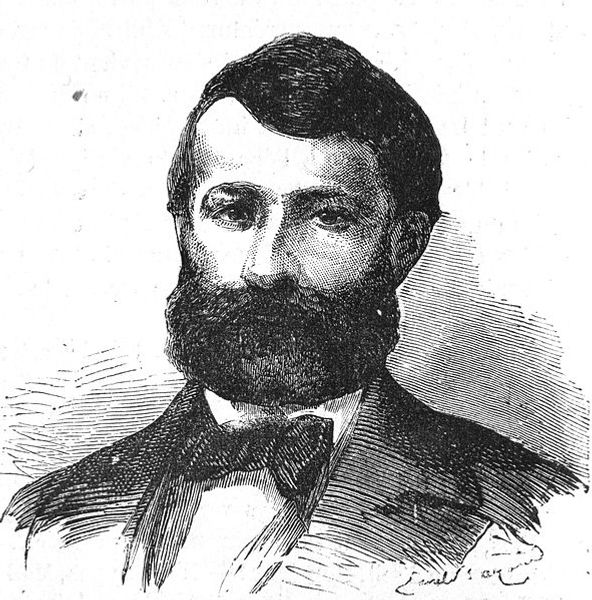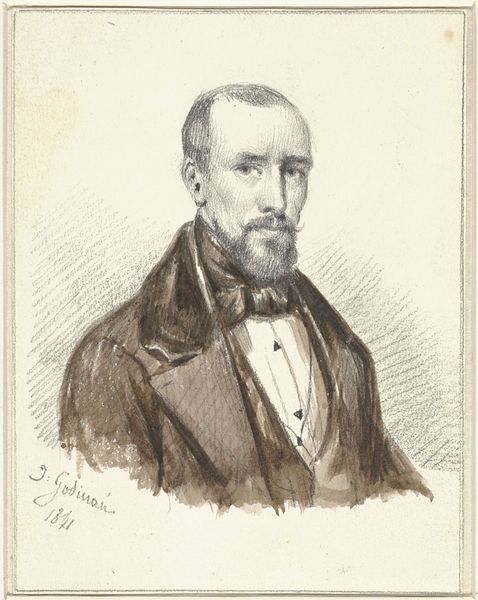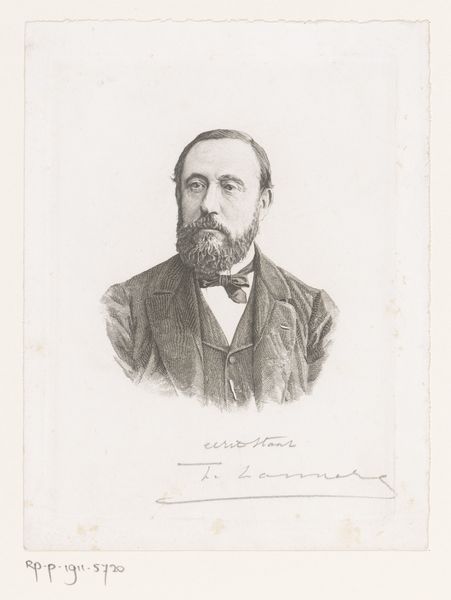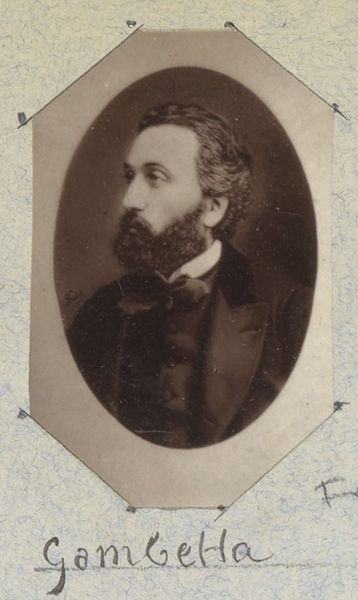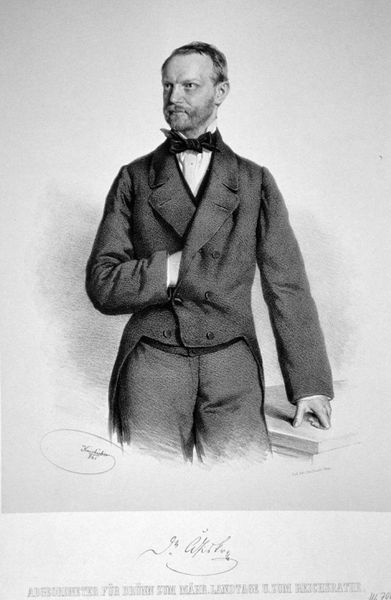
Copyright: Public domain
Editor: This is Paul Leroy's "Portrait D'auguste Dorchain," made in 1896, using pencil as the medium. The details feel so intimate, almost as if the artist captured a fleeting thought. What do you see in this piece beyond a simple likeness? Curator: Beyond a mere representation, this portrait strikes me as a profound commentary on the male intellectual identity at the fin de siècle. The intense gaze, combined with the soft lines of the pencil, creates a tension that speaks to the societal expectations and internal struggles of men during a period defined by rapidly shifting cultural and political landscapes. Consider the Impressionist style - often relegated to fleeting landscapes and domestic scenes. What does it mean to apply these visual politics to a male portrait? Editor: That’s interesting, I hadn’t considered Impressionism in terms of portraiture, it challenges my preconceived notions. What particular struggles do you think are hinted at here? Curator: Think about the rise of the "New Woman," and anxieties surrounding masculinity. This is further compounded by France's colonial ventures and debates on citizenship. Look at the details – the slightly averted gaze and the soft lines suggesting vulnerability rather than rigid masculinity. Could Leroy be commenting on the unspoken pressures placed upon men of that era to maintain a stoic facade while grappling with doubt and change? Editor: So, it's not just a portrait of Dorchain, but a reflection of the artist and his society at a turning point in history? Curator: Precisely. By using the language of Impressionism to depict a man, Leroy subtly questions the dominant narratives of power and identity that shaped the period. It invites us to see the sitter not just as an individual but as a representative of broader social tensions. Editor: That’s a powerful point, and it helps to look at the art in its social context, rather than merely aesthetics. I learned a lot about it and its significance! Curator: Indeed, art becomes much more meaningful when viewed as an intersectional dialogue across different perspectives. It really is an exchange across social movements.
Comments
No comments
Be the first to comment and join the conversation on the ultimate creative platform.

